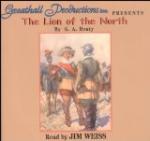“The Scots were led by Hepburn, Hume, and Sir James Ramsay; the English by Sir Charles Rich, brother to the Earl of Warwick, Sir James Hayes, and others. The odds seemed all in favour of the Spaniards. who were much superior in numbers, and were splendidly accoutred and well disciplined, and what was more, were well fed, while Mansfeldt’s bands were but half armed and almost wholly starving.
“It was a desperate battle, and the Spaniards in the end remained masters of the field, but Mansfeldt with his bands had burst their way through them, and succeeded in crossing into Holland. Here their position was bettered; for, though there was little fighting for them to do, and they could get no pay, they lived and grew fat in free quarters among the Dutch. At last the force broke up altogether; the Germans scattered to their homes, the English crossed the seas, and Hepburn led what remained of Sir Andrew Gray’s bands to Sweden, where he offered their services to Gustavus. The Swedish king had already a large number of Scotch in his service, and Hepburn was made a colonel, having a strong regiment composed of his old followers inured to war and hardship, and strengthened by a number of new arrivals. When in 1625 hostilities were renewed with Poland Hepburn’s regiment formed part of the army which invaded Polish Prussia. The first feat in which he distinguished himself in the service of Sweden was at the relief of Mewe, a town in Eastern Prussia, which was blockaded by King Sigismund at the head of 30,000 Poles. The town is situated at the confluence of the Bersa with the Vistula, which washes two sides of its walls.
“In front of the other face is a steep green eminence which the Poles had very strongly entrenched, and had erected upon it ten batteries of heavy cannon. As the town could only be approached on this side the difficulties of the relieving force were enormous; but as the relief of the town was a necessity in order to enable Gustavus to carry out the campaign he intended, the king determined to make a desperate effort to effect it.
“He selected 3000 of his best Scottish infantry, among whom was Hepburn’s own regiment, and 500 horse under Colonel Thurn. When they were drawn up he gave them a short address on the desperate nature of the service they were about to perform, namely, to cut a passage over a strongly fortified hill defended by 30,000 men. The column, commanded by Hepburn, started at dusk, and, unseen by the enemy, approached their position, and working round it began to ascend the hill by a narrow and winding path encumbered by rocks and stones, thick underwood, and overhanging trees.
“The difficulty for troops with heavy muskets, cartridges, breastplates, and helmets, to make their way up such a place was enormous, and the mountain side was so steep that they were frequently obliged to haul themselves up by the branches of the trees; nevertheless, they managed to make their way through the enemy’s outposts unobserved, and reached the summit, where the ground was smooth and level.




